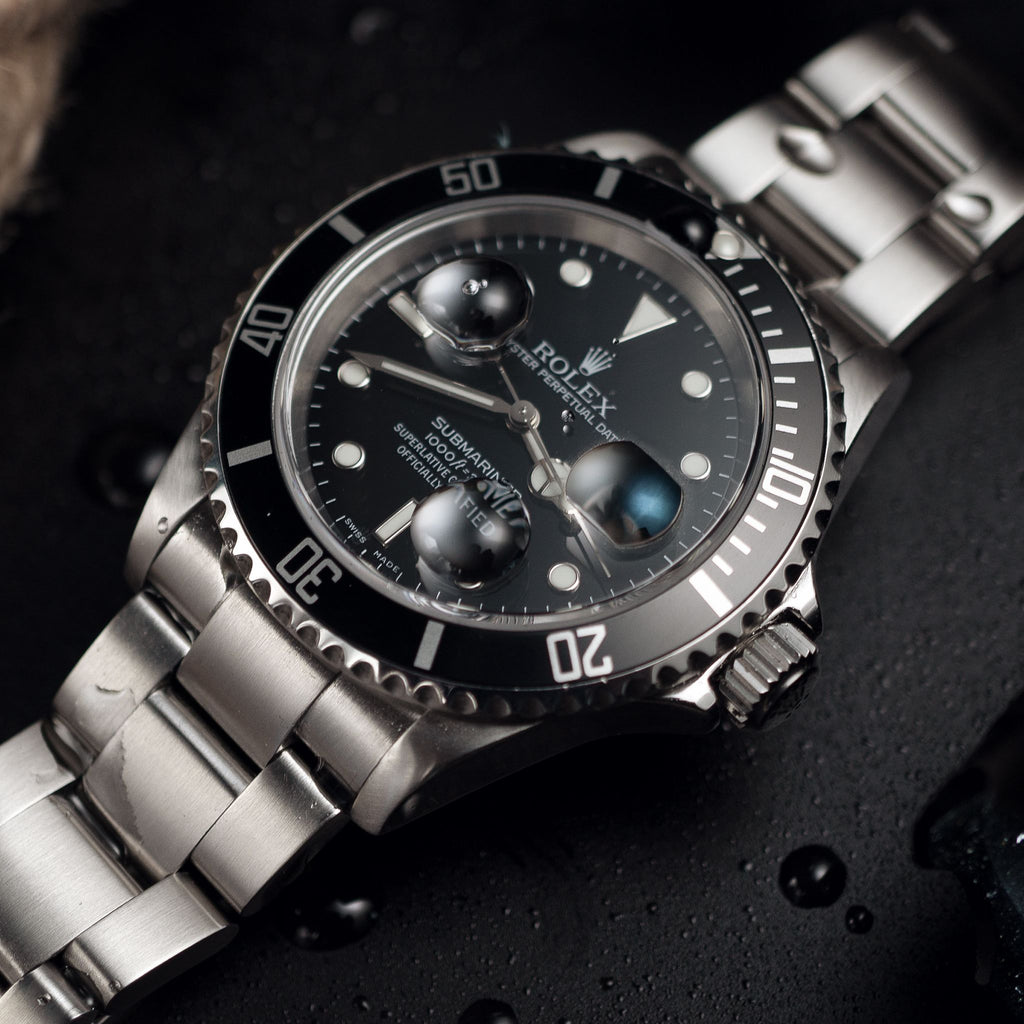Ah the Submariner, a true classic if ever there was one. Did you know that it's been in production for nearly 70 years? You probably did know that. Did you also know that it's been worn by James Bond? You probably knew that as well, to be honest. There are so many historical points that the Submariner happens to have been involved in that doing one long article wouldn't be enough. So, let's focus on one for now, shall we?
The Submariner received a significant update in 2020 in the form of a new case that was larger, a new movement and contemporary colour options. The last time the Submariner got a really big update was when it transitioned from the 16610 to the 116610 which gave the watch a more chunky appearance (and a ceramic bezel). Let's go back in time a little to the late 1980s when Rolex introduces a new Submariner with the reference 16610.

Nine months before the launch of the 16610, Rolex introduced the Submariner 168000, an extraordinarily rare transitional Submariner. The 168000 was an evolution of the 16800, but the extra zero on the reference number signified the fact that the watch was made from 904L stainless steel, surgical grade steel that's more resistant to corrosion and saltwater damage than the standard 316L used on the 16800.
Rolex also made the 16610 from 904L steel; in fact, Rolex still produces it in its foundry to this very day under the name Oystersteel. The 16610 also used white gold for the hands and markers for the first time, which meant that they wouldn't rust or patina over time.

The real change was inside the watch, though, as the 16610 used the calibre 3135, the first time Rolex had used this movement in a Submariner. The 3135 is an incredibly long-lived calibre that Rolex has used in one form or another in nearly every watch in the range up to 2020 (the Submariner 116610 used an updated version of the 3135 inside it). We're talking watches such as the Everose YachtMaster and nearly every 36mm DateJust. Rolex slowly refined it during its production run, but it was essentially the same movement in the 16610 and its successor.
That meant the Submariner 16610 got a 48-hour power reserve, automatic winding, a 4Hz beat rate and 31 jewels. It's also been given a COSC chronometer certificate for its performance and fitted with the Parachrom hairspring that Rolex uses to negate the effects of temperature variations and shocks. This movement also has a full balance bridge and a free-sprung balance for extra robustness in the face of shocks and vibrations. The 3135 is known as a reliable workhorse movement, in fact, the 16610 Submariner exemplified the idea that Rolex watches keep going and going without much maintenance (that's a bit of an exaggeration, we always recommend you look after your watch and have it serviced at regular intervals).

A rare version of the 16610 with a silver 'Serti' dial which replaces the typical lumed markers with diamonds and rubies.
Back to the 16610. It received a few updates throughout its production, but not many. Notably, all versions before 1999 had either tritium lume or LumiNova, but in 1999 Rolex updated it to SuperLumiNova (you can tell on a Rolex which lume you have by the colour. SuperLumiNova and its predecessors are a greenish-yellow while Rolex' current lume, Chromalight, is blue).
Rolex also used the 16610 as a base for other versions of the Submariner. Notably, the 14060 Submariner, which was introduced in 1990 and did not have a date function or a cyclops. The 14060 was produced until 2002. Rolex also built the 16613 on the form of the 16610. The 16613 had a two-tone case and bracelet and could be had with a blue dial and blue bezel.

In 1990, Rolex introduced the Submariner reference 16618, the first Submariner to be made from solid gold. It turned the bling factor up to the max with a solid 18k yellow gold case and bracelet. Rolex offered it with either a black dial and bezel combo or blue instead. Sure, a solid gold diving watch is entirely unnecessary. However, it's something cool to show off with, and the fact it can still dive to 300m like the stainless steel 16610 Submariner is cooler still, at least in our opinion.

Perhaps the most famous of all the Submariner variations built on the classic 16610 was the 16610LV, also known as the Kermit. It was Rolex' piece to mark the 50th-anniversary of the Submariner, and it came with a black dial and a bright green bezel to match the iconic green colour Rolex is known for. Apart from the change in colour of the aluminium bezel insert, the watch was identical to the 16610.

There is one significant difference between the 16610 and 16610LV, a distinction that isn't physical, the asking price. Whereas a 16610 Submariner will set you back around £7500 in good condition (that's more than a brand new Submariner), the 16610LV's special edition status means its price is higher, much higher. You can expect to pay over £13,000 for a 16610LV, that's more than a brand new two-tone Submariner.
So, why the high cost? Well, exclusivity for one. Rolex doesn't make them any more, and never will again, so tracking one down in a desirable condition is going to be hard, especially if your budget is a little tight.
Mostly, though, the reason that all Submariners from the 16610 era cost so much is because of the hype they've created over the years. They were popular back when the internet was becoming a thing, and watch websites were beginning to appear. Since the beginning of the online world, the Submariner 16610 has been there. It lasted until 2010 as well, and it had over 20 years to cement itself as the go-to luxury sports watch.


